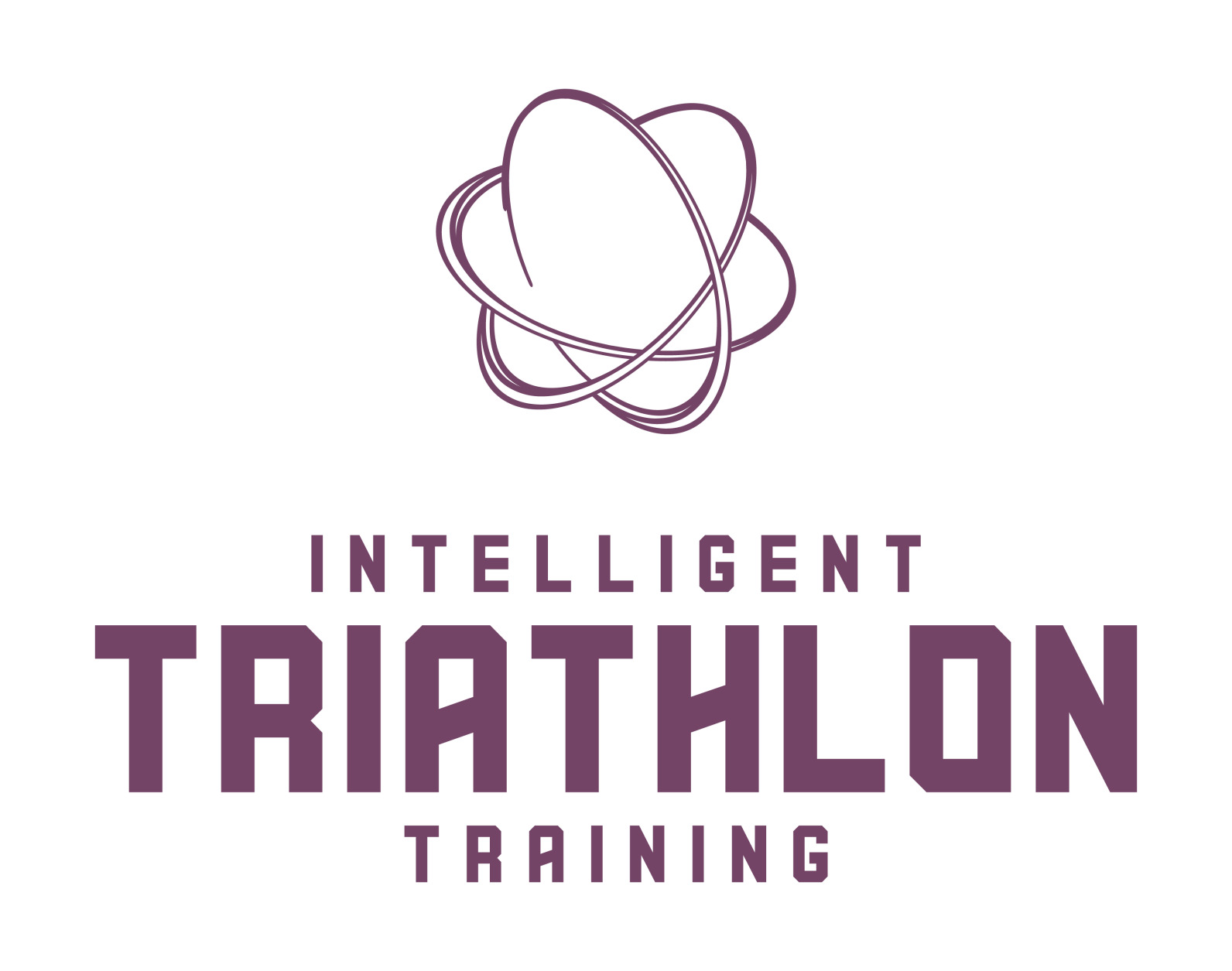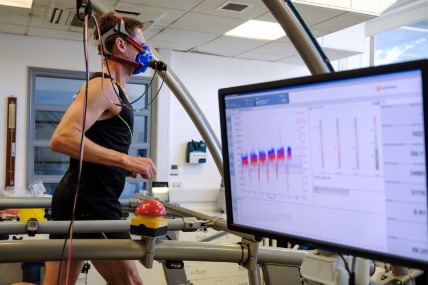Functional Threshold Power is just the tip of the Iceberg
Training, March 27, 2021
FTP is one of the most commonly known metrics in cycling, but is it the only one you need to know? Probably not, different length events will require different profiles, and FTP may or may not be as important as other metrics we can test, in this article we explore other physiological metrics that are important in triathlon training performance
Why you should know about more than just FTP!
We hear a lot about FTP (Functional Threshold Power), but what is it, why does it matter, what are the other thresholds and what do they do?
What is a threshold?
We use the term 'threshold' to define a point where something changes. Functional Threshold Power (FTP) is one of the most well know 'thresholds'; although strictly speaking it's not measuring a threshold change, it is, however, closely related to Lactate Threshold 2 (which as the name suggest, IS a threshold).
Physiologically speaking, once exercise intensity exceeds a threshold, something different begins to happen in the body. This can then be used in training to set training, elicit a specific response, or control intensity to provide better pacing strategies. These work for running and cycling, although sometimes terms differ slightly for the sport.
Thresholds describe an intensity, so that can be in watts or speed or pace, depending upon the unit's use. We are also interested in the relative intensity at which thresholds occur, ie % of VO2max.
So what thresholds are there?
Functional Threshold Power (FTP) / Lactate Threshold 2 (LT2)
In theory, FTP is closely related to Lactate Threshold 2 (LT2), Anaerobic Threshold (AT), Maximum Lactate Steady State (MLSS), Critical Power (CP) and a whole host of other names people have come up with over the years. It marks a point where carbohydrates are used exclusively to fuel exercise, we also see a significant rise in hydrogen ions in the blood, which will cause greater acidity and therefore increases the rate at which fatigue will set it.
If we monitor blood lactate, we would see a sharp rise in values. This does NOT cause the pain you feel; it is a consequence of the greater rate of carbohydrates.
Lactate is part of the process of converting carbs into energy. We can use the blood lactate values as a pseudo indicator of increased acidity, but it's not the cause; the hydrogen ions are.
Lactate Threshold 1 (LT1)
This is a point at a lower exercise intensity than FTP/LT2, where there is a sustained increase in carbohydrate requirements. Up until this point, exercise has been fuelled almost exclusively by fats (almost, because some functions like the brain require only carbs, so there is always a small amount of carbohydrate being used).
If we monitor blood lactate, we would see a slight rise in values above the baseline. Again there are various methods for detecting this point, most of which require either lactate testing or a physiology lab test. This threshold is really important for Ironman and ultra-endurance athletes as it is much more closely associated with race intensity than FTP.
Fat Max or MRFO (Maximum Rate of Fat Oxidisation)
This is the highest rate at which an athlete can burn fats as fuel. We are also interested in the work rate at which this occurs and the relative intensity. MRFO can vary a lot between athletes and has very little to do with body composition.
Typically values range from a rate of 0.2g/min to 1.2g/min. Increasing this rate will result in fewer carbs being used to fuel exercise, and increasing the intensity that this rate occurs at will improve the speed the athlete can maintain over long durations.
It is possible to have two athletes with the same LT1 power output and FTP but have very different MRFO figures. This would not really affect them over short distance events where it is possible to take on supplemental carbs at regular intervals, but as the duration starts to exceed 8-9hrs, then we would likely see the better fat-adapted athlete pull ahead of, the less well-adapted.
There are many reasons for this, but the most significant is that after this duration, it logistically becomes harder to provide sufficient carbs in a format that is palatable and deliverable. For instance, in ultra running, where the competitor needs to carry all their nutrition, it's not practical to be carrying 2 - 3 kg of carbs that might be required. In a cycling/triathlon event, having aid stations and using the bike to carry the load is feasible.
Becoming better fat-adapted can also have an impact on your training. Athletes reliant on large volumes of carbohydrates tend to fatigue sooner in training phases and take longer to recover from long-duration, moderate-intensity sessions.
How do we use this information?
There are lots of ways this information can be used:-
- To set training intensity
- To profile an athlete's performance requirements
- To evaluate training programmes
- To evaluate sessions.
Training Intensity
Anything that happens below LT1 is fundamentally the same; the closer it occurs to LT1, the greater the energy cost and, therefore the load of the exercise, but it's using the same metabolism.
The same between LT1 and LT2/FTP. At the lower end, it is likely there are a large proportion of fats being used to provide energy, with a small contribution from carbs. At the higher end, it will be the other way around.
Above LT2/FTP exercise is entirely fuelled by carbs, and hydrogen ions will accumulate unless intensity comes down below FTP, thus causing fatigue. The further over FTP the athlete goes, the higher the rate, and the greater the accumulation, therefore, the quicker fatigue sets in.
As coaches, we can set training using these simple 3 zone systems. Aerobic Endurance needs to be predominantly below LT1, for instance. Of course, there are many systems for creating zones, but most revolve around these 3 zones, they just break them down into smaller zones. The zone systems are anchored around these three zones, though.
Profiling
If we know the event an athlete wants to perform in, we can determine the requirements of that event; then, we can benchmark where the athlete is in relation to the requirements. This doesn't just mean saying, 'we need 300w,' for example. It is about the relative strengths of the athlete.
For example, if we see an ironman athlete with an LT1 at 55% of their FTP, then raising FTP is not really going to help their performance. They need to improve their LT1 to race a better Ironman.
Thresholds are only a part of a profile, as there are other areas such as capacity, fatigue resistance and efficiency which will also contribute.
Evaluation of a Programme
When reviewing a training programme, the time spent in zones is one way of looking at the training load and the type of training performed. Again, using the 3-zone system provides a quick indication as to the type of training.
If an athlete is doing a lot of training in Zone 2 this can be very fatiguing as it's at a high percentage of their FTP and sustainable for long periods. For example, a middle-distance triathlon would be performed very close to the top end of Zone 2 (~85 - 90% FTP).
If the training phase is supposed to be developing FTP or VO2max, then we can expect to see ~ 10 - 20% of the total training time in Z3. If these are not happening, it can provide significant insight into what a programme is failing or, conversely, succeeding.
Evaluation of a Session
Similar to the above point, we know certain sessions require specific intensity to make the appropriate adaptation. Looking at time in Zone (again, 3 zone system for me), is one of the first things I do to see how the session has been executed.
The session to the right is a VO2max session with some aerobic volume, so we would not expect to see much work performed between LT and LT2. We expect to see a large percentage below LT1 and a significant amount in Z3, above LT2/FTP. If we didn't see this, it would immediately alert me to delve a little deeper into what happened.
Summary
Thresholds are more than just FTP, and in the middle distance and longer events, FTP is not the most important threshold either.
Knowing your thresholds can help you to
- Decide which type of training you need to undertake
- Set the correct intensity to train at
- Monitor your progress
- Pace your efforts in racing
- Insightfully review your racing and training.











